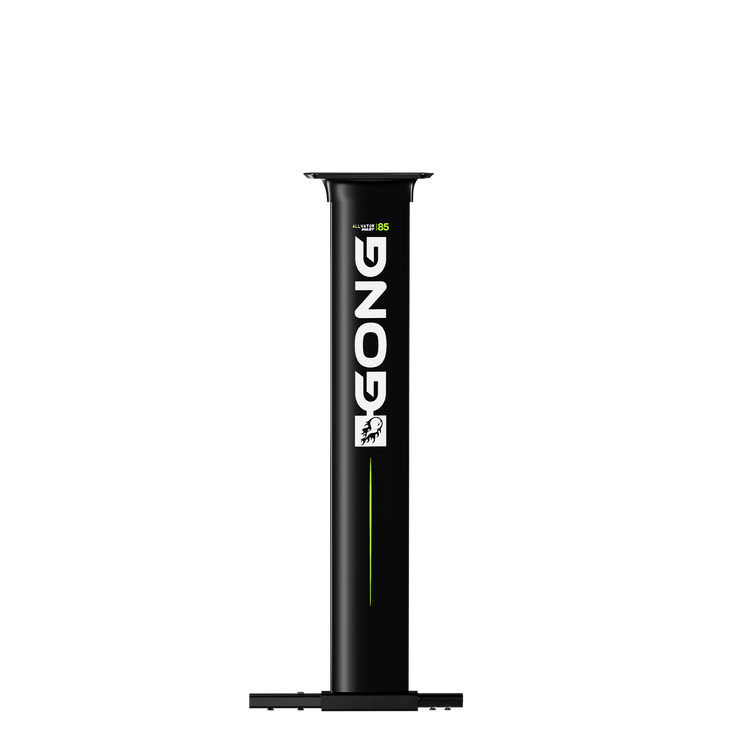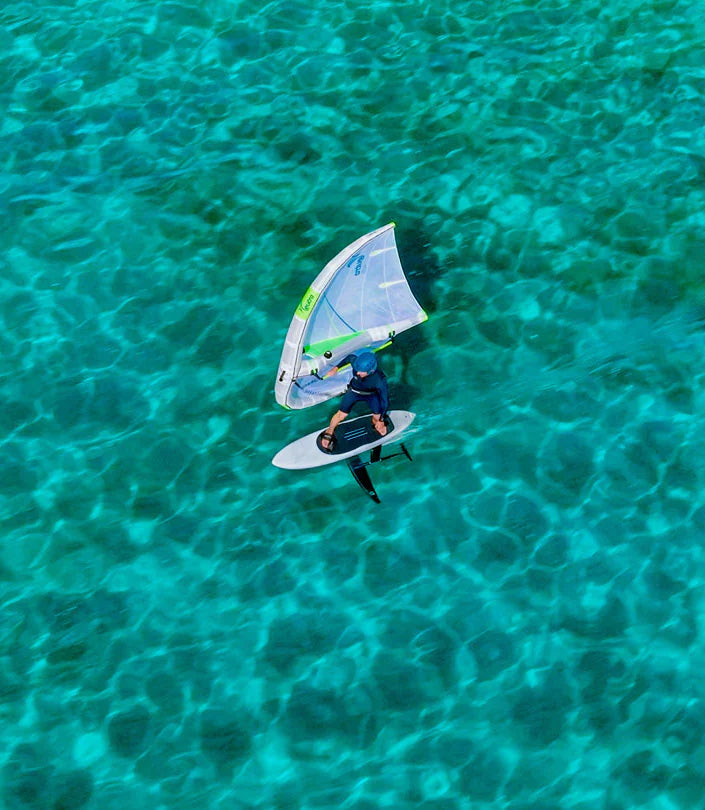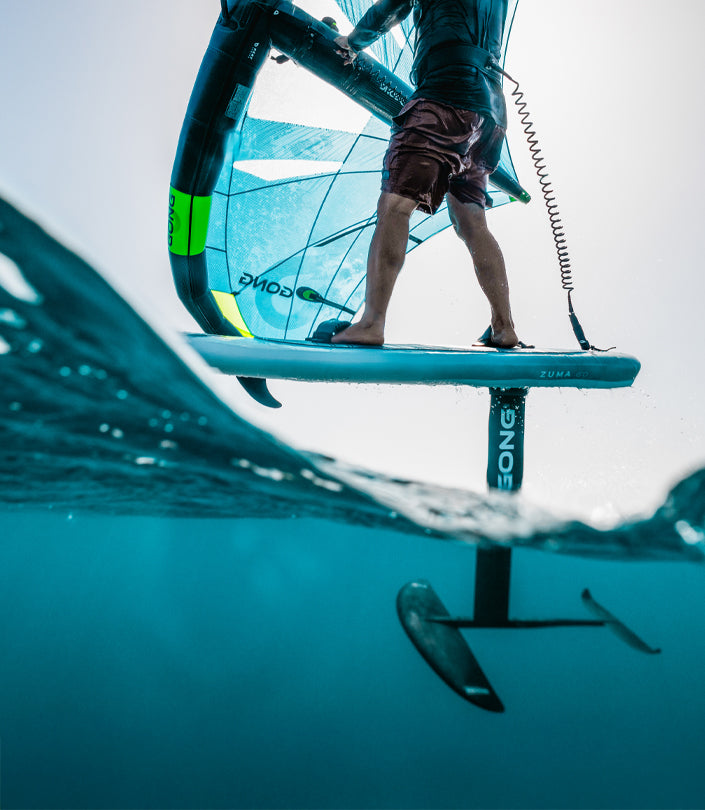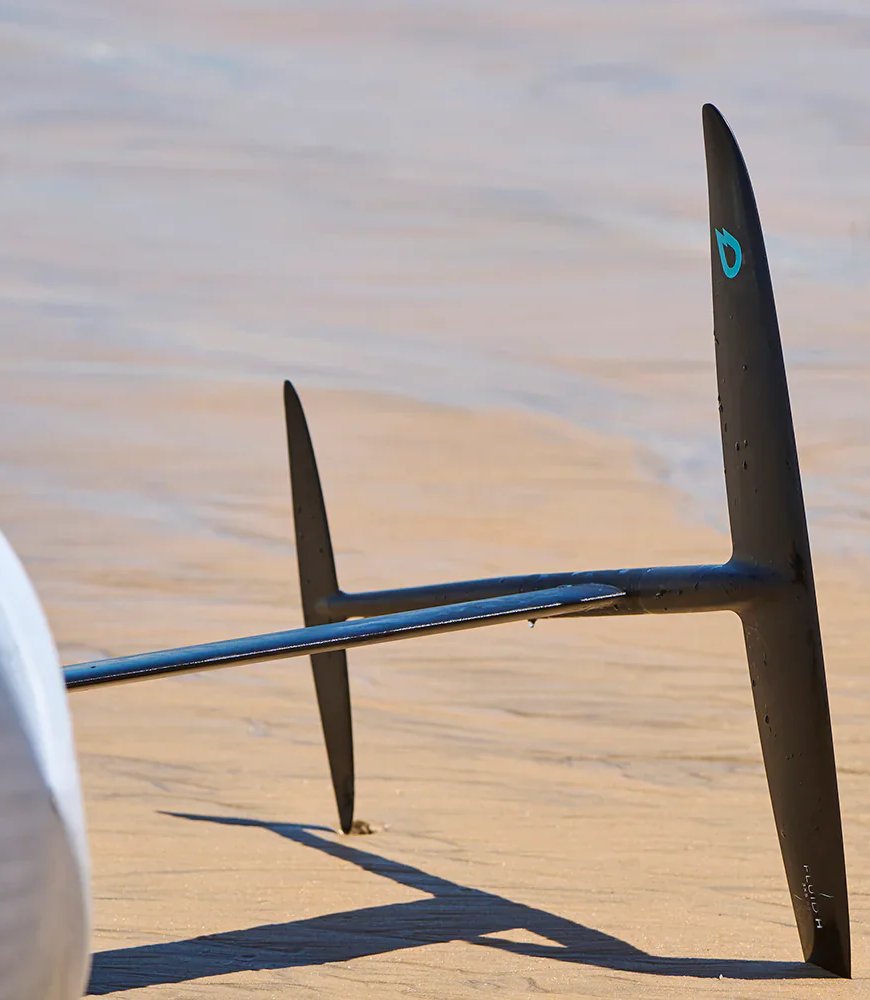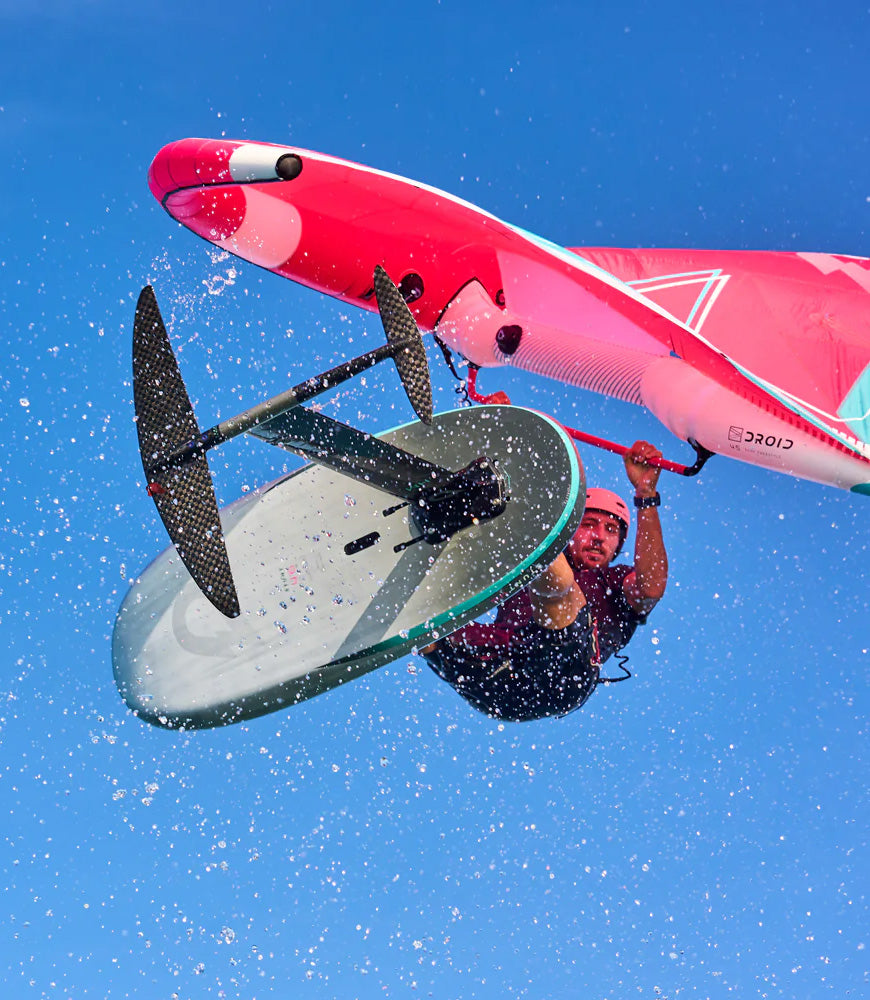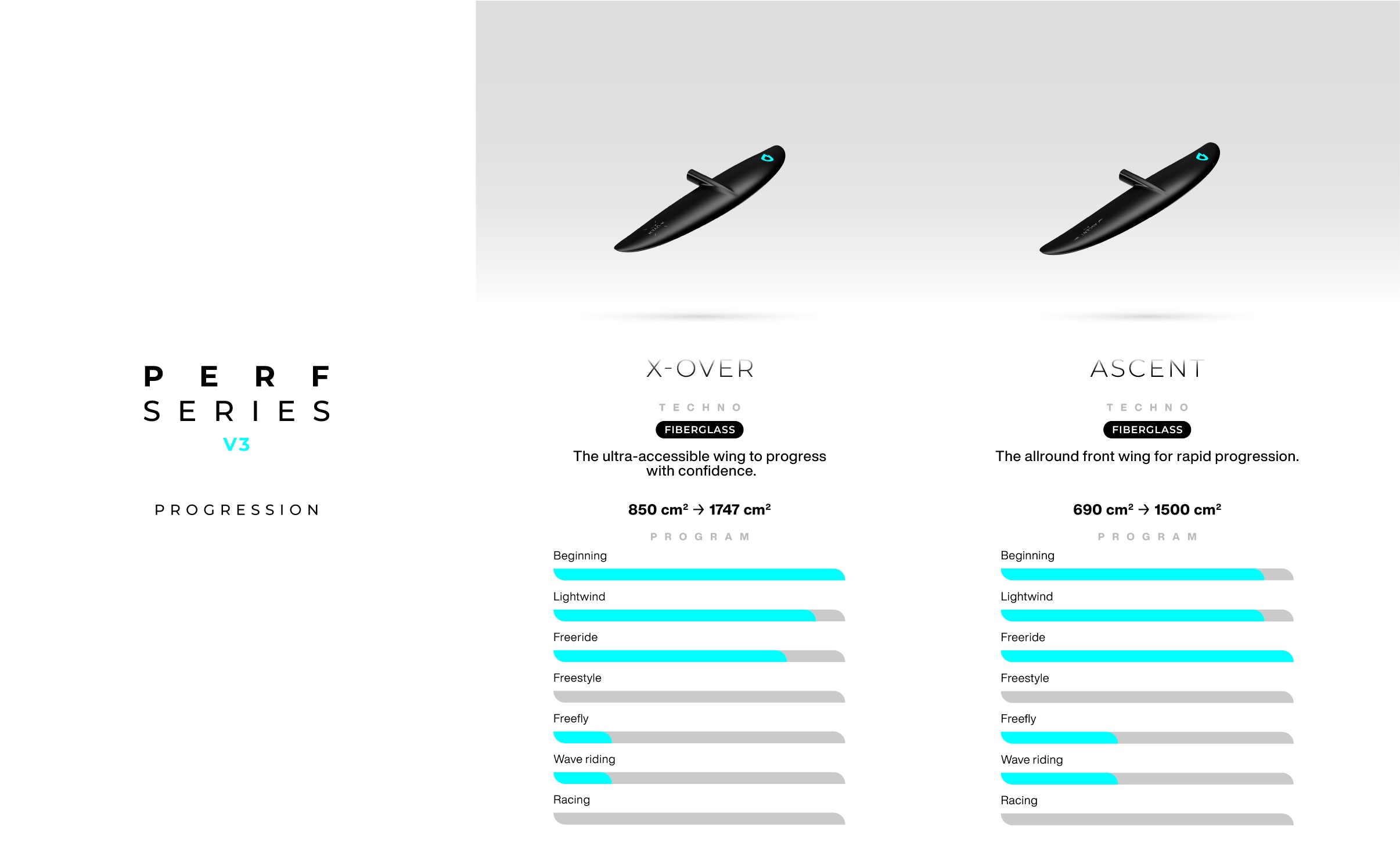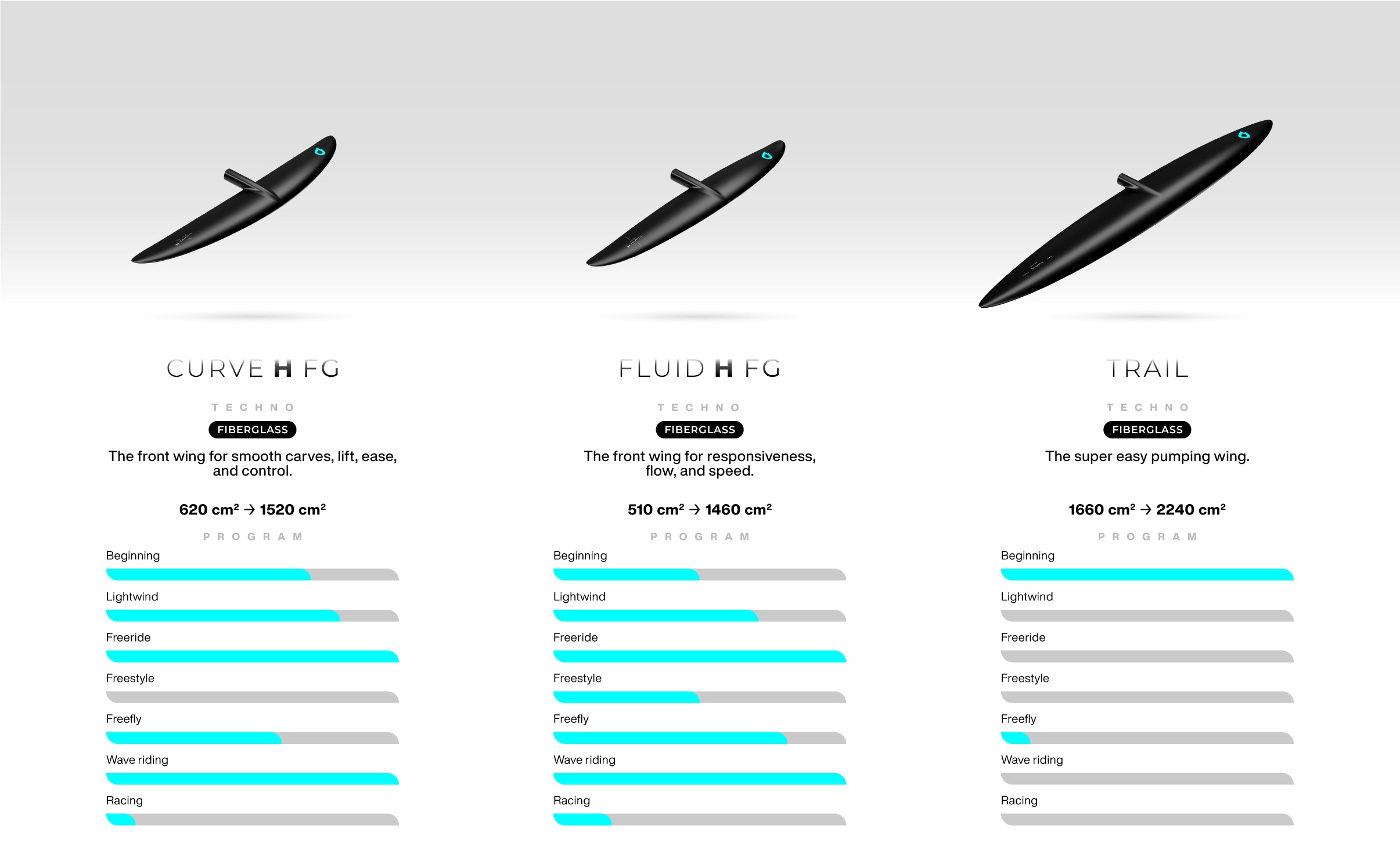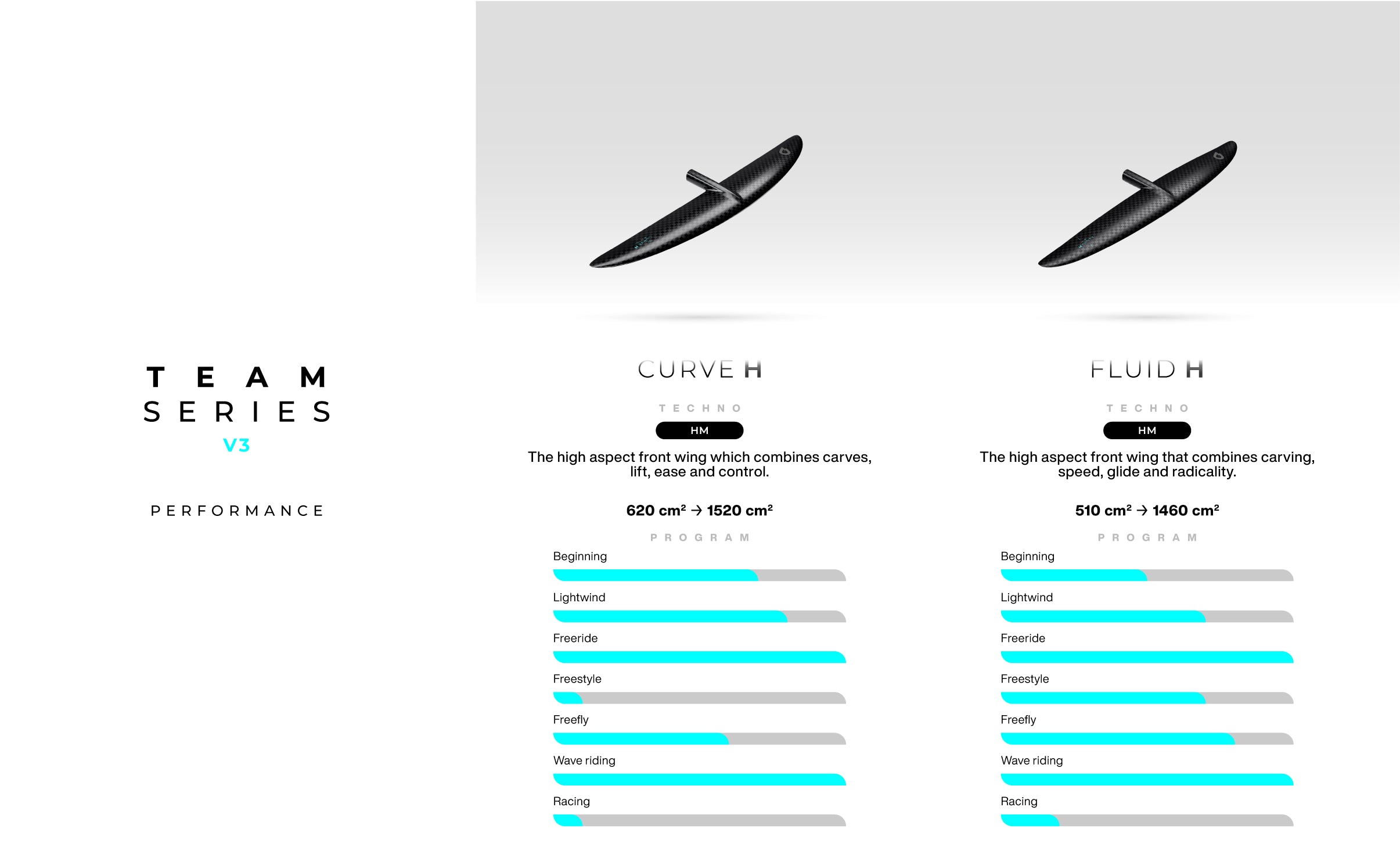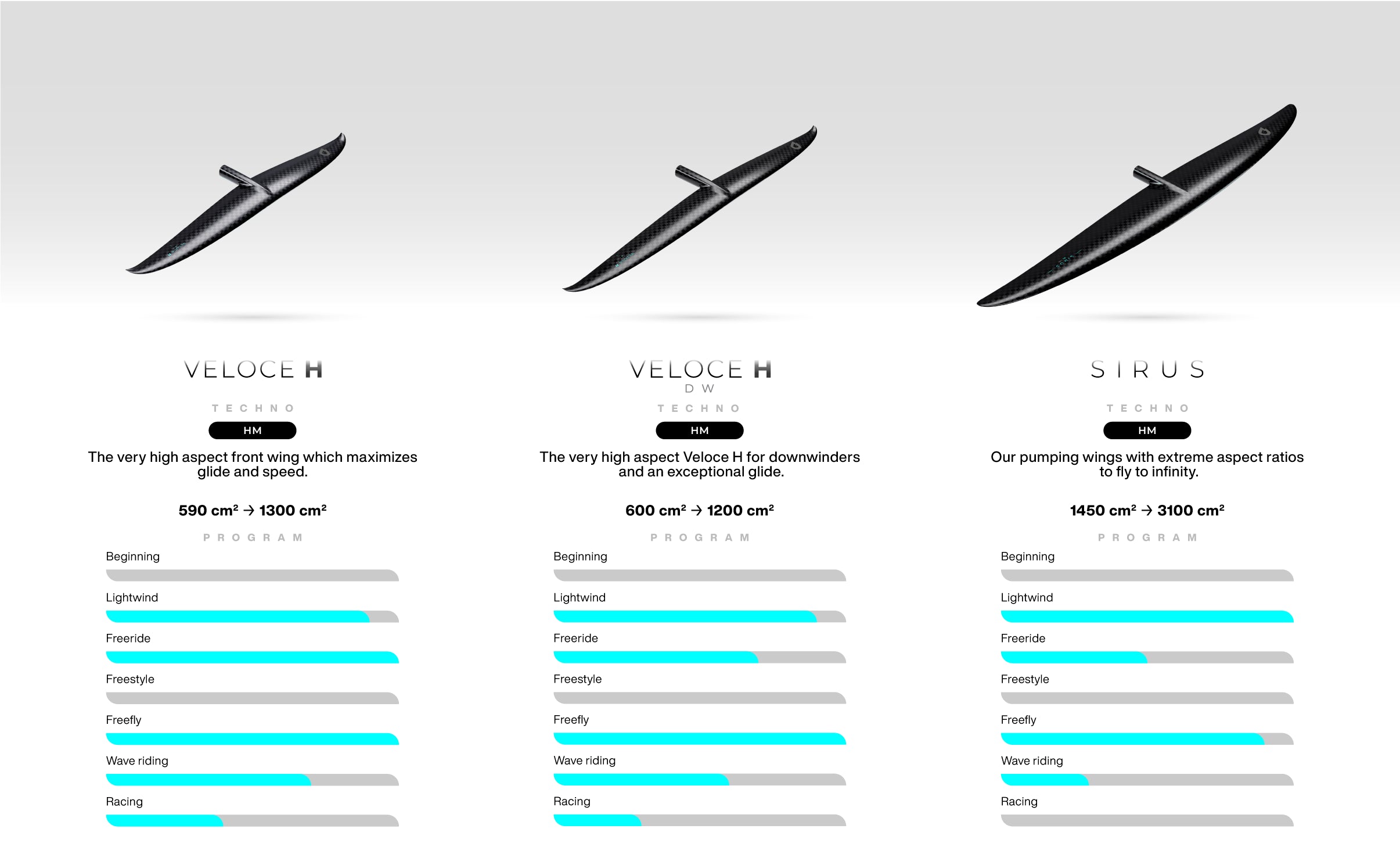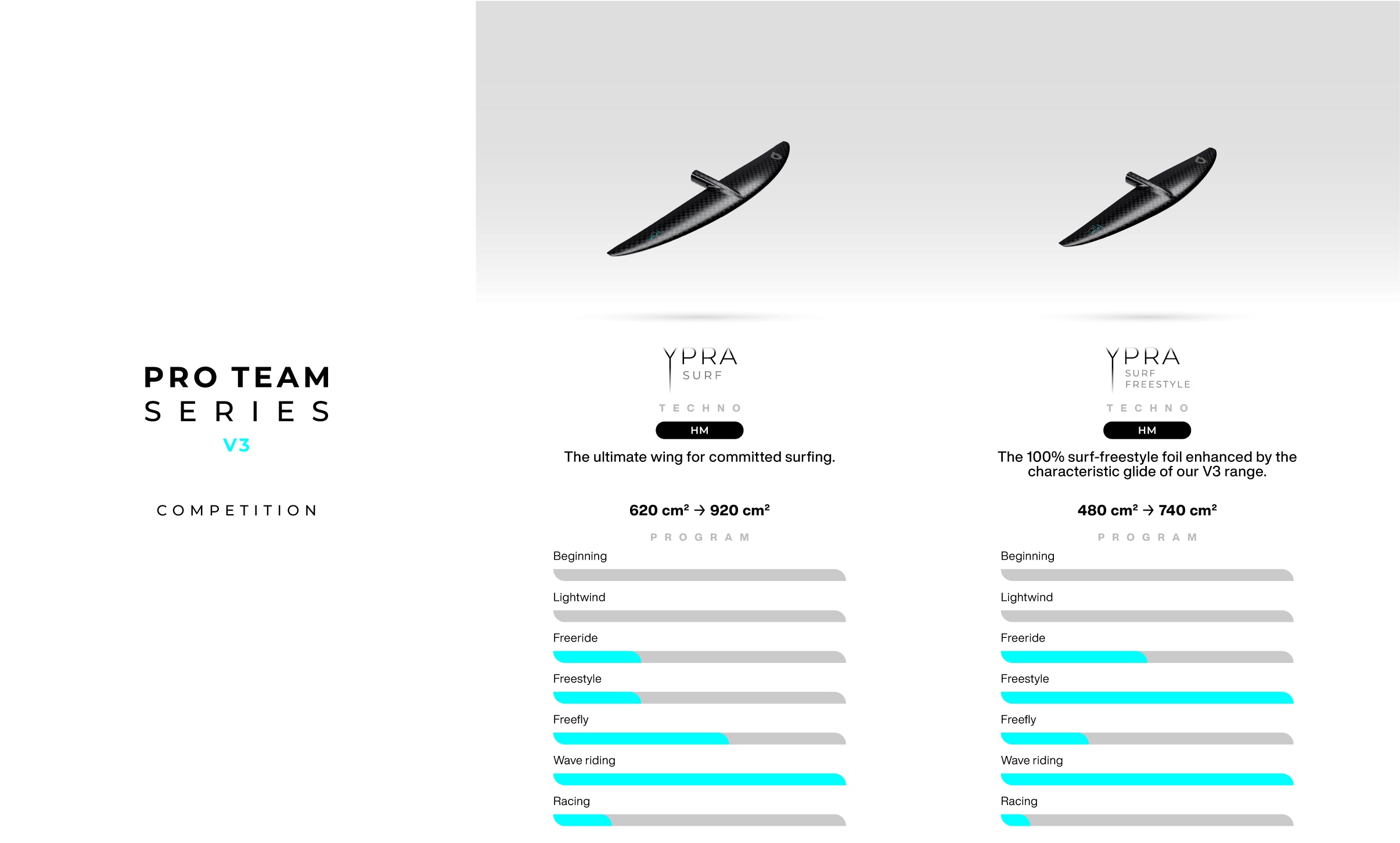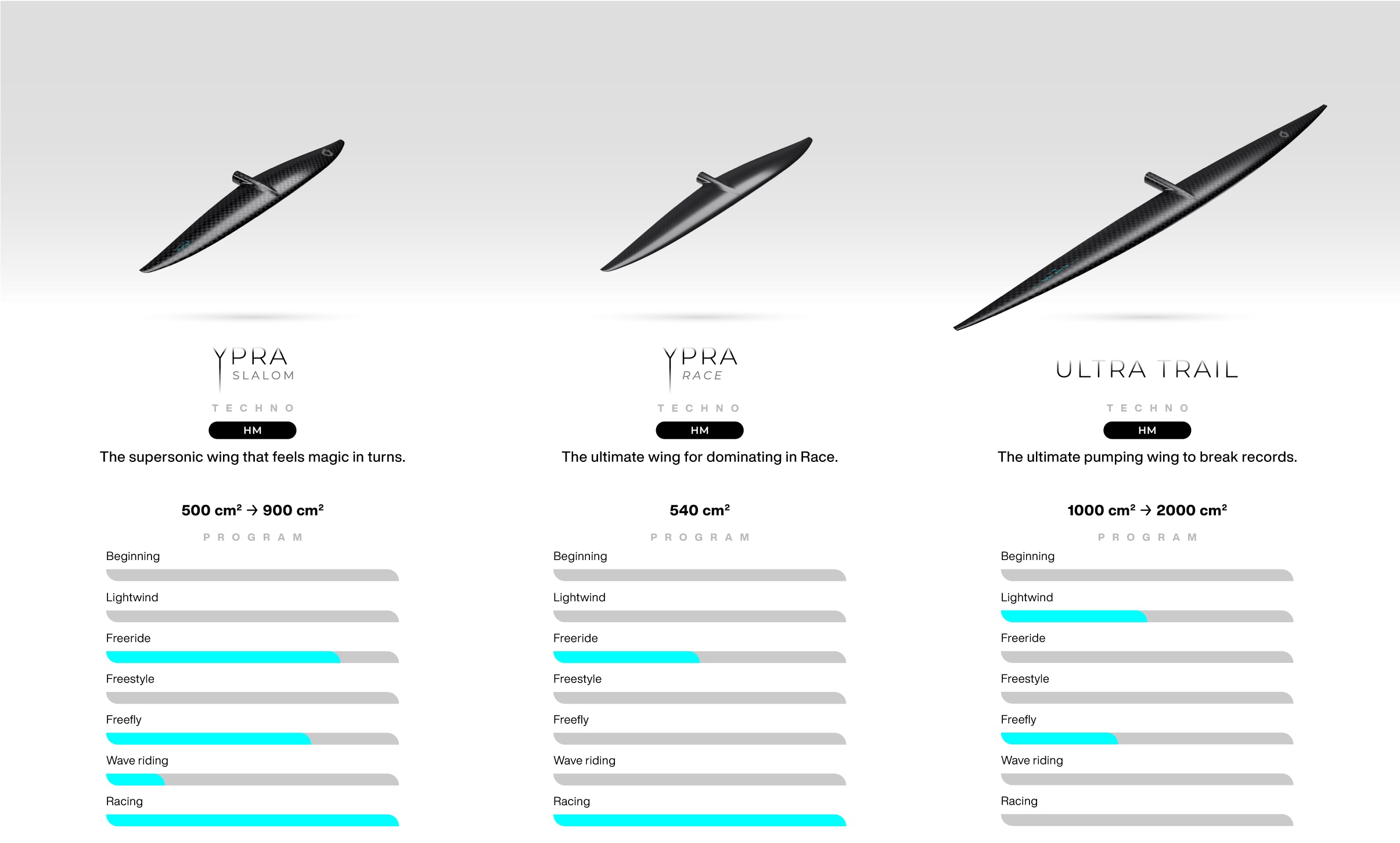What type of foil is best for beginners?
The X-Over V3 is designed for beginners with its high lift and tolerance, making it perfect for learning safely.
What size of front wing should I choose based on my weight and skill level?
For the V3, reduce the surface area by about 200 cm² compared to the V2. Choose a larger surface for light wind and stability, and a smaller one for maneuverability and speed.
What is the impact of the aspect ratio on the foil's behavior?
A high aspect ratio promotes glide and speed (ideal for freefly and racing), while a moderate ratio offers more tolerance and a good balance between maneuverability and stability (e.g. Curve V3).
How can I optimize the foil's placement on the board?
Moving the foil slightly forward in the box increases lift, ideal for light wind. Moving it back improves stability and control at high speed.
How do I choose the stabilizer for my front wing?
Ideally, use stabilizers and front wings from the same range, but you can mix them to adjust the character of your foil (e.g. Fluid stab with Curve front wing for more glide).
What are the advantages of an elliptical vs. rectangular outline?
The elliptical outline is more maneuverable, perfect for surfing (e.g. Fluid V3), while the rectangular outline favors stability, ideal for beginners.
What size stabilizer should I use with my front wing?
Typically, match the same size (e.g. L with L), but for a more technical effect, reduce or increase the stabilizer to adjust the foil's self-stability and lift.
How do I maintain my foil to prolong its lifespan?
Rinse with fresh water after each session, regularly check the condition of screws and connections, use Tikal, and store in a dry place away from sunlight.
Which foil is best for light wind?
The Sirus V3 is optimized for light wind with exceptional lift, followed by the Veloce HDW for speed in light winds.
How do the dihedral and curvature of the wings influence the foil's behavior?
A positive dihedral (tips up) improves maneuverability; a negative dihedral (tips down) favors stability and grip in turns.
What is the stall speed and why is it important?
The stall speed is the minimum speed to maintain flight, which varies from one foil to another and depends on the rider's ability to control the foil. A low stall speed (e.g. Sirus V3) is crucial for light wind and pumping.
How do I choose a foil for surfing vs. freestyle?
The Fluid V3 is perfect for surfing with its maneuverability, while the Ypra Surf Freestyle is ideal for freestyle moves with great pop and repop.
Can I mix different front wings and stabilizers in a quiver?
Yes, you can/should mix ranges to adjust performance, but respect the program of the front wing. Pair stabilizers to modulate maneuverability, glide, or lift based on your goal.
What is the difference between standard and high aspect ratio models for freefly and racing?
A high aspect ratio provides better glide (e.g. Ypra Race V3), while a moderate ratio offers optimal tolerance (e.g. Curve V3).
What mistakes should I avoid when buying a foil?
Don't choose a foil that's too technical or sized incorrectly for your level. Opt for wings with a program suited to your goals and a stabilizer that complements the front wing.
Is it possible to repair a foil if it gets damaged or cracked?
Yes, composite foils can be repaired. Professional service is often needed for optimal repair. Our GONG Factory workshop ensures perfect maintenance.
How do I choose a foil for downwind?
Opt for a front wing with a high aspect ratio and an appropriate surface, such as the Veloce HDW or Sirus V3 for downwind with good performance in low energy.
What are the differences between the manufacturing technologies of foils?
GONG V3 foils use prepreg composites made of carbon or fiberglass, baked under very high pressure for great strength and dynamism, optimizing rigidity and weight for each range.
What foil quiver should I have for a wide range of use?
A good quiver includes a Sirus V3 front wing for light wind, a Curve V3 for freeride and waves.
What tips can help me take off more easily in light wind?
Use a front wing with a larger surface for lift (e.g. Sirus V3), move the foil forward a bit (1-2 cm) in the box, and choose a 5m² or larger wing for more traction. Most importantly: go for a Cruzader, which will change your approach to light wind.








